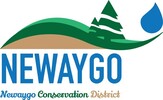Small Trees and Shrubs
When is a plant a tree or shrub? At what size is it a shrub? A tree?First, trees and shrubs are plants that have woody growth. Only plants with woody parts are trees and shrubs. Once you know that it has woody growth, you can determine whether it is a tree or a shrub. The generally acknowledged definition of a tree, is a woody plant having one erect perennial stem "trunk at least three inches in diameter at a point 4 1/2 feet above the ground, a definitely formed crown of foliage, and a mature height of at least 13 feet.
Shrubs, therefore, are the opposite of a woody plant with several perennial stems that may be erect or may lay close to the ground. It will usually have a height less than 13 feet and stems no more than about three inches in diameter.
It is important to have an idea of the approximate size at maturity of the trees and shrubs commonly used in landscape plantings. Mature size is greatly influenced by the length of the growing season, temperature, light,water, soil type, fertility, and many other factors. This makes it impossible to predict the exact mature size of a plant. Plants in shade will often grow taller with a thinner crown than ones growing in an open area. A plant not competing for light may eventually attain the same height, but is likely to be much broader.
Shrubs, therefore, are the opposite of a woody plant with several perennial stems that may be erect or may lay close to the ground. It will usually have a height less than 13 feet and stems no more than about three inches in diameter.
It is important to have an idea of the approximate size at maturity of the trees and shrubs commonly used in landscape plantings. Mature size is greatly influenced by the length of the growing season, temperature, light,water, soil type, fertility, and many other factors. This makes it impossible to predict the exact mature size of a plant. Plants in shade will often grow taller with a thinner crown than ones growing in an open area. A plant not competing for light may eventually attain the same height, but is likely to be much broader.
|
Arrowwood *
Choke Cherry * Black Chokeberry * Highbush Cranberry * Gray Dogwood * Redosier Dogwood * Silky Dogwood * Common Elderberry * Red Elderberry * American Hazelnut * Winterberry Holly * American Mountain Ash * Nannyberry * Ninebark * American Plum * Eastern Redbud * Serviceberry * Fragrant Sumac * |
|
